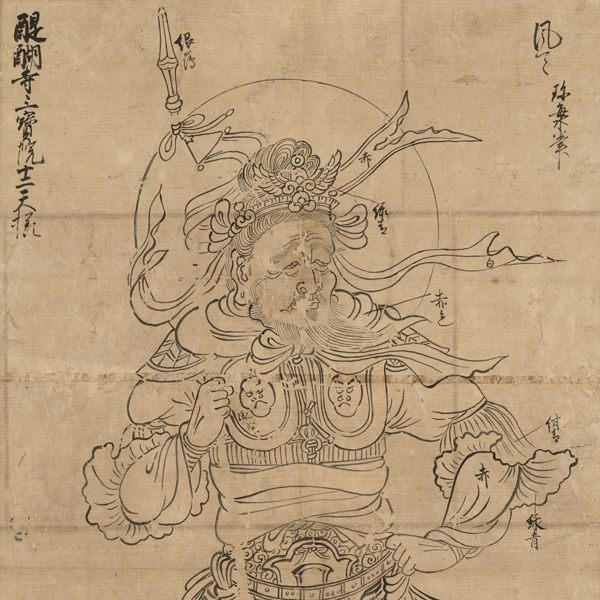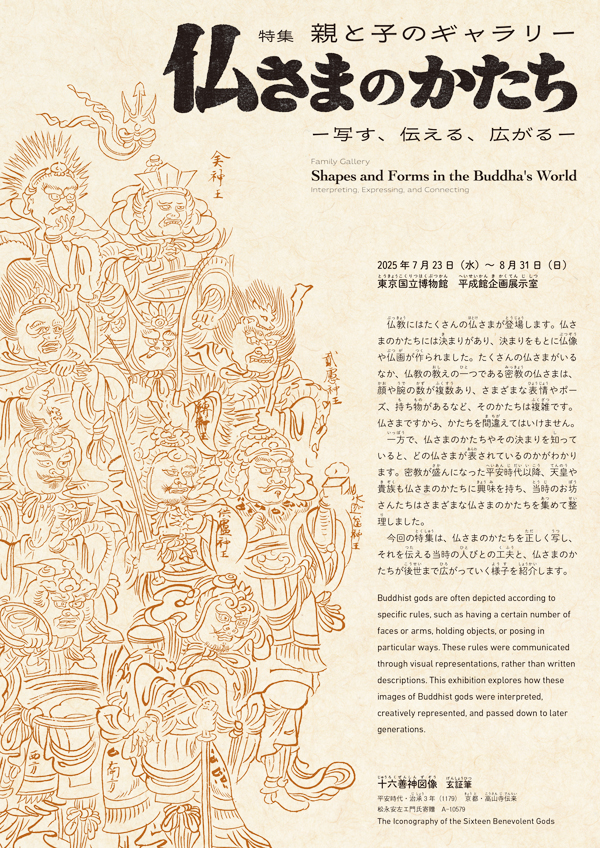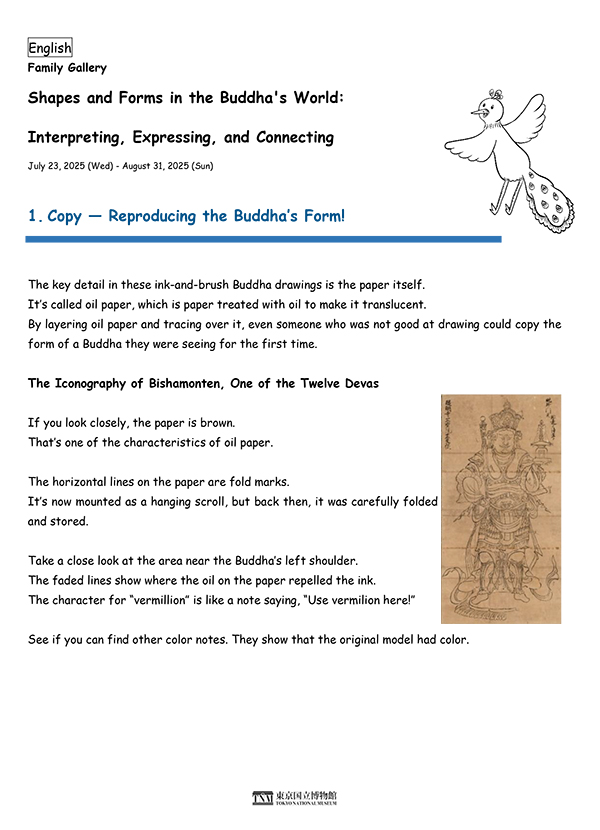Japanese Archaeology and Special Exhibition (Heiseikan) Thematic Exhibition Room
July 23, 2025 (Wed) - August 31, 2025 (Sun)
Buddhist gods are often depicted according to specific rules, such as having a certain number of faces or arms, holding objects, or posing in particular ways. These rules were communicated through visual representations, rather than written descriptions.
This exhibition explores how these images of Buddhist gods were interpreted, creatively represented, and passed down to later generations.



